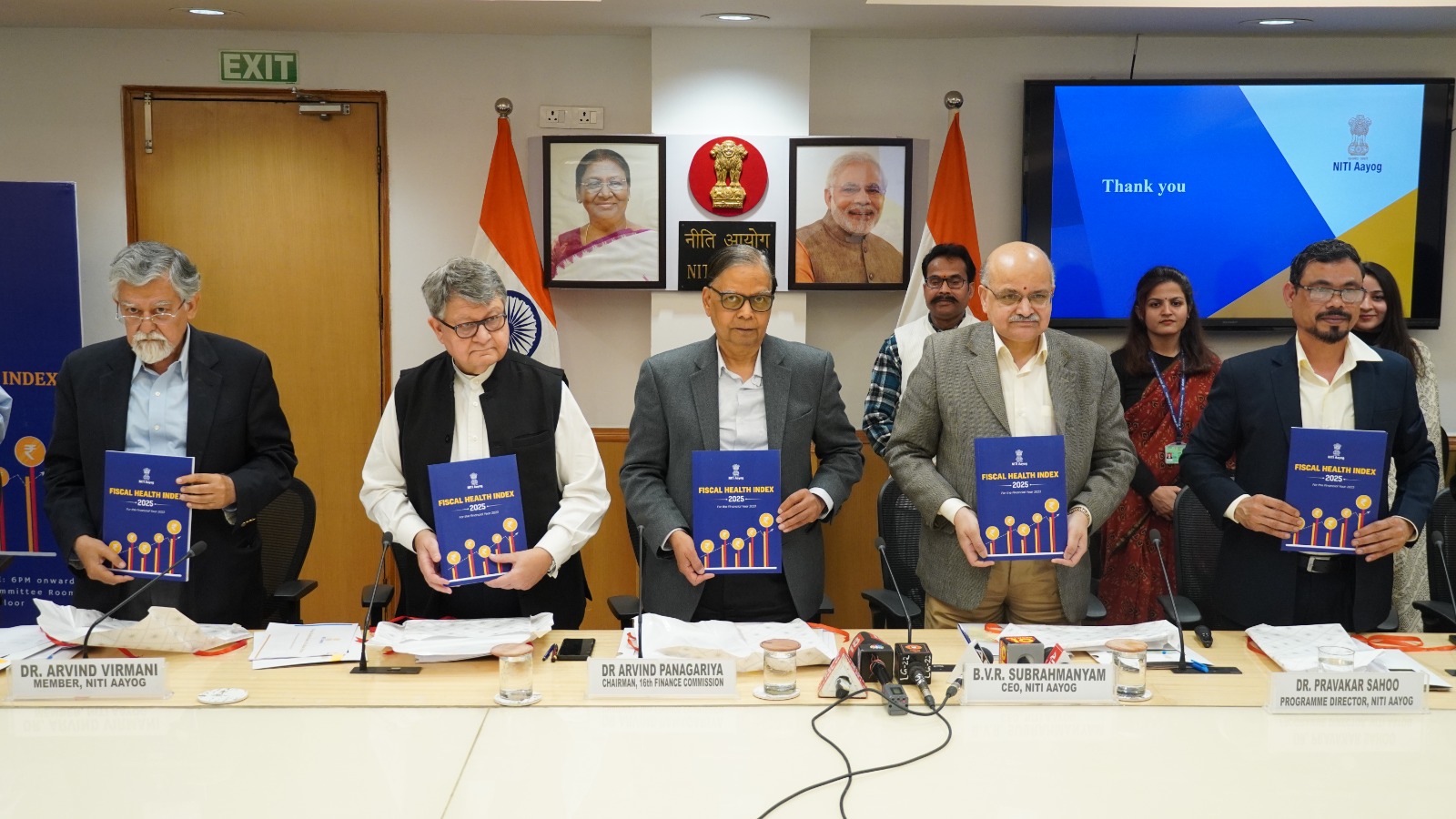On January 24, 2025, the inaugural issue of NITI Aayog’s “Fiscal Health Index (FHI) 2025” was launched in New Delhi by Dr. Arvind Panagariya, the Hon’ble Chairman of the 16th Finance Commission. The event was attended by Shri Suman Bery, Vice Chairman of NITI Aayog, Dr. Arvind Virmani, Hon. Member of NITI Aayog, Shri BVR Subrahmanyam, CEO of NITI Aayog, Dr. Anoop Singh, Distinguished Fellow at NITI Aayog, along with other senior officials.
Objective and Purpose of the FHI Report
The FHI report aims to provide a comprehensive assessment of the fiscal health of 18 major Indian states. This index evaluates states on five key sub-indices:
- Quality of Expenditure
- Revenue Mobilisation
- Fiscal Prudence
- Debt Index
- Debt Sustainability
The purpose of the FHI is to offer data-driven insights that will help inform state-level policy interventions. These insights aim to improve fiscal governance, economic resilience, and stability across the nation.
Key Findings from the FHI Report
The FHI ranks the states based on a composite fiscal index derived from the five sub-indices mentioned above. The report highlights the fiscal performance of each state, with Odisha topping the ranking with a cumulative score of 67.8. Other high-ranking states include:
- Chhattisgarh (Score: 55.2)
- Goa (Score: 53.6)
These states excelled in areas like revenue mobilisation, expenditure management, and debt sustainability. States like Jharkhand have shown improvement, especially in fiscal prudence and debt sustainability. On the other hand, Karnataka experienced a decline due to weaker performance in expenditure quality and debt management.
Significance of the FHI for State-Level Fiscal Governance
Dr. Arvind Panagariya emphasized the importance of following a stable fiscal path for regional development and long-term fiscal sustainability. He stated that the FHI offers valuable insights into fiscal trends and promotes a more integrated approach to fiscal health, underscoring the shared responsibility of both the central and state governments.
Shri Suman Bery stressed that the FHI is not merely a ranking tool but a roadmap for achieving fiscal consolidation, transparency, and effective resource management. The FHI encourages states to assess their fiscal strategies and improve their financial health.
Shri B.V.R. Subrahmanyam highlighted the role of the FHI in providing objective insights to policymakers. He noted that the findings of the FHI align with India’s broader vision of achieving “Viksit Bharat @2047,” where fiscal discipline at the state level plays a pivotal role in national economic transformation.
Cooperative Federalism and the FHI Report
Dr. Arvind Virmani congratulated the team behind the FHI and noted that the report underscores the role of cooperative federalism in strengthening India’s governance framework. He emphasized the importance of collaboration between the Centre and states to address regional disparities and drive holistic economic development.
Conclusion and Future Outlook
The FHI report marks the beginning of an annual series aimed at providing valuable insights into the fiscal health of India’s states. By offering data-driven evaluations, the FHI will support informed decision-making and help policymakers identify areas requiring strategic intervention and planning.
Multiple Choice Questions (MCQs):
1. What is the primary purpose of the Fiscal Health Index (FHI) report?
A) To rank the states based on economic growth
B) To assess the fiscal health of Indian states and provide insights for policy interventions
C) To evaluate state-level tax policies
D) To measure the level of government spending in each state
Answer: B) To assess the fiscal health of Indian states and provide insights for policy interventions
2. Which state topped the ranking in the Fiscal Health Index (FHI) report 2025?
A) Goa
B) Chhattisgarh
C) Odisha
D) Karnataka
Answer: C) Odisha
3. How many sub-indices are used to evaluate the fiscal health of states in the FHI report?
A) Four
B) Five
C) Six
D) Seven
Answer: B) Five
4. What is one of the key features of the FHI according to Shri B.V.R. Subrahmanyam?
A) It focuses only on debt sustainability
B) It helps policymakers align state strategies with national objectives
C) It only ranks states based on expenditure
D) It encourages states to reduce taxes
Answer: B) It helps policymakers align state strategies with national objectives
5. What aspect of governance does Dr. Arvind Virmani highlight in relation to the FHI report?
A) Central government control over fiscal policies
B) Cooperative federalism to address regional disparities
C) Privatization of state-run enterprises
D) Reduction in government spending
Answer: B) Cooperative federalism to address regional disparities
